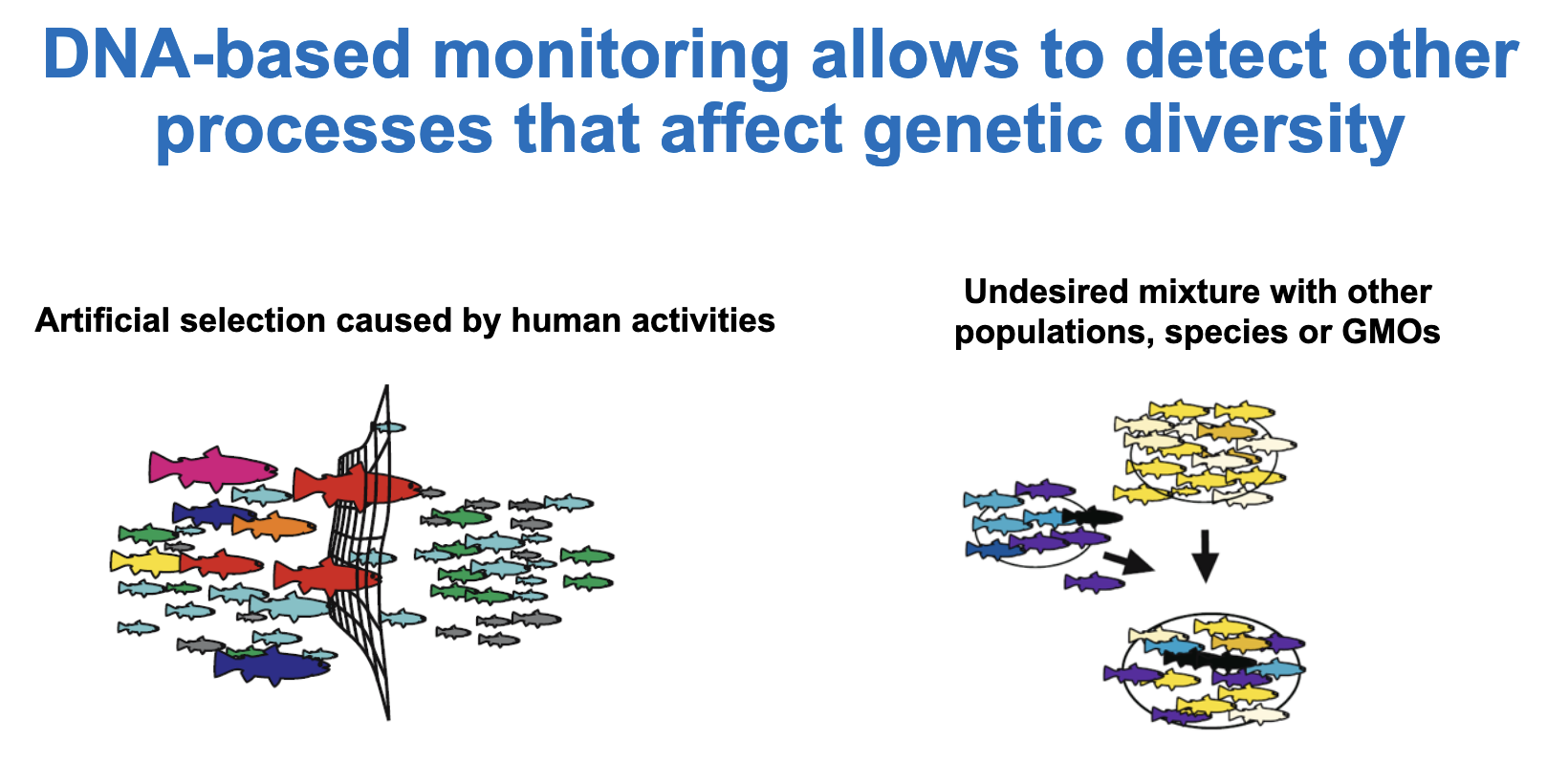DNA-based genetic monitoring indicator
Other processes that can affect genetic diversity, such as undesired gene flow with introduced species, populations, or genetically modified organisms, inbreeding, or changes in frequency of genes underlying selection which are altered by selective harvest, do require genetic data to be monitored.

DNA-based monitoring allows us to detect processes that affect genetic diversity and that are not captured by the PM and Ne 500 indicator. For instance, harvesting larger fish can lead to size selection, thus reducing the frequency of alleles related to larger body size (left). Another example is undesired admixture with other populations, closely related introduced species or genetically modified organisms (GMOs).
The DNA-based monitoring indicator is a simple count of the number of species being monitored (temporally) using DNA-based methods. Although this does not directly relate to the maintenance of genetic diversity or preventing genetic erosion, genetic monitoring is critical to informing conservation management actions and this indicator can help gauge country progress in incorporating this critical body of work. Genetic studies can also provide useful information on ecology and adaptation of a species which can help improve management. Trends in this indicator can be measured with changes in the number of species (or populations) being monitored genetically.
This indicator was not adopted by the GBF, but several countries have started to monitor some species with DNA-based methods (for example see Charlier et al. 2012, da Silva et al. 2018, Luna et al. 2022, Gajdárová et al. 2023, Saha et al. 2024, Pearman et al. 2024).
The DNA-based monitoring indicator is measured at the species level: each species being monitored counts as one, even if only one population is being monitored.